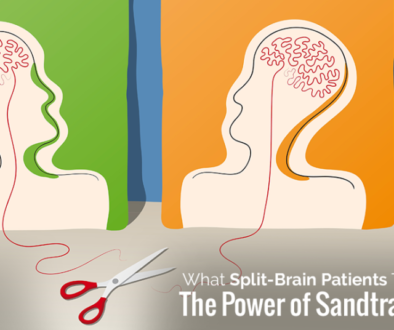Sandtray and Self-Care: How And Why You Should Use This Powerful Method to Clear Off Your Own Mirror
It begins by doing our own work, hopefully with a therapist or friend with a similar perspective on the value of the implicit an the inherent. As we gradually modulate our impulse to control our own recovery process, we will likely find ourselves extending this grace to everyone — patients, family, friends, and possibly the world at large. This may help us become ever more skilled listeners with fewer agendas and judgments.\”
-
-
- Bonnie Badenoch
-
The Heart of Trauma: Healing the Embodied Brain in the Context of Relationships
Only three sentences. But three extremely long-reaching and potentially life-changing sentences.
But life-changing? Really? And what does this have to do with sandtray?
First, let me tell you, Bonnie Badenoch is the oracle and a much-needed truth-teller for therapists everywhere.
Her most recent book, quoted above, reads like a treatise for the therapy profession as a whole. She calls us all to do our own work. She says we must shift the focus internally towards who we are as a person in the therapy room if we want to be the best possible therapist. This is in stark contrast to what most therapists believe is the answer to improving therapy skills, which is the continual adding of therapy techniques to the therapist\’s toolkit.
But wait, you may be thinking – isn\’t that what we go to school for and why we complete training programs – to figure out how to actually do this stuff???
Yes, this would seem to be the case; however, Badenoch provides extensive research that all points towards the fact that it is WAY less about what we do in session rather than WHO we are.
To provide you with a little background to hang your left-brained hat on, let me explain a bit about how she comes to this conclusion and about what it has to do with doing your OWN sandtrays.
We know trauma causes changes in our body and our brain, or what we refer to as our \”embodied brain,\” since we now know that there is absolutely no clear distinction between what we refer to as the brain and body.
When any of us experience trauma, especially that which is experienced without a safe person near, our bodies physically hold the trauma. Our eyes begin (and remain) narrowed, our ears filter differing wavelengths and sounds and even our skin changes how it responds.
All of this happens below the level of consciousness, making our ability to change it very difficult when using just words. But really, it\’s more than just our ability to change and heal the effects of the trauma, it\’s also our ability to recognize these effects as ever even present. When trauma happens to a person, it happens to the whole body, not just the skull-brain or one part, but the entire body, often taking the form of implicit memory.
And, since we have 80% of the information about what is occurring in our world coming UP from our body into our skull-brain (as opposed to the other way around,) a large majority of effects of the trauma is held in our body in implicit form, which cannot be accessed with cognitive processes.
But again, what all does this have to do with us as therapists and sandtray?
As therapists, we MUST, work on healing our own trauma or we won\’t last in this profession, not to mention not do our best work while we are with our people.
But, there\’s more to healing our own trauma than merely being able to tell an lengthy explanation of what happened told to another (although this is a step in the right direction), our bodies must also experience the healing on an embodied, implicit level. And? You don\’t get this with talking – the healing can only happen with the use of an expressive healing technique, such as sandtray therapy.
When we do our own work using sandtray therapy, we are finally able to get a felt sense of healing. We are then able to regulate within ourselves stimuli coming from the internal or external world. We are able to experience and be with our client\’s pain, but not become it.
We are also able to react and provide what our client needs from a place of genuine inclusiveness for all kinds of pain, knowing that we have felt and worked to heal ourselves using this powerful medium of sandtray that accesses what Badenoch states as \”pain that has often been too powerful to call into words.\”
Without cleaning off your own mirror, you\’re not able to be an accurate reflection for your clients.
And the good news is…the tool you need to do just this you likely already have in your office, just sitting and waiting to help heal your own story.










